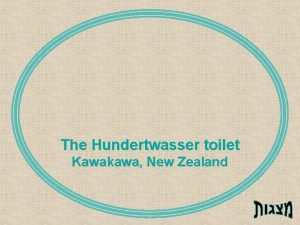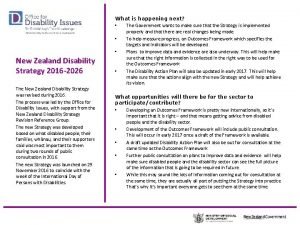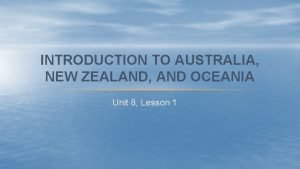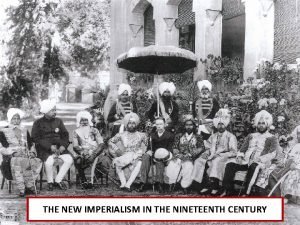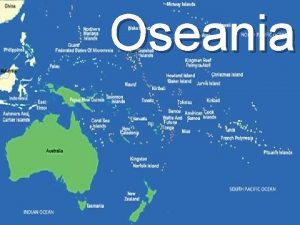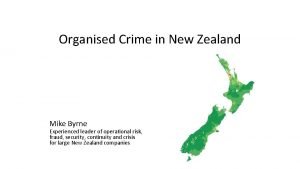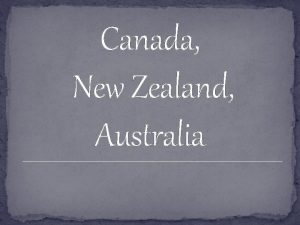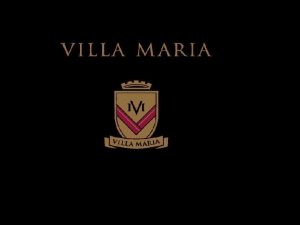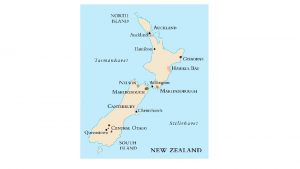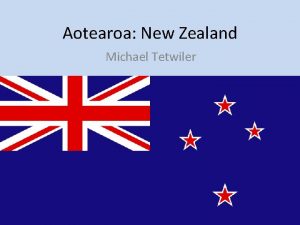NEW ZEALAND TERTIARY COLLEGE CONFERENCE CHILDREN IN A














- Slides: 14

NEW ZEALAND TERTIARY COLLEGE CONFERENCE CHILDREN IN A COMMUNITY OF LEARNERS: ENCOURAGING RESPECTFUL INTERACTIONS Pauline Bishop Unitec Te Whare Wānanga o Wairaka

WHAKATAUKI ‘Te piko o te māhuri, tērā te tipu o te rākau’ (As the young sapling is moulded, that is the directional growth of the adult tree) (Skerrett, 2007, p 12)

QUESTIONS TO CONSIDER: v What do children learn from how we treat them? v What impact does our treatment have on them as members of a community? v What does it mean to hold children in unconditional positive regard? Some strategies used by teachers to manage children’s behaviour involve power over tactics. The effectiveness and rationale for these strategies is challenged.

THE EDUCATION (EARLY CHILDHOOD CENTRES) REGULATIONS, (2008) part 1 r 29 (p. 24) states: 30 suspension of licenses: (b) the service provider has(i) physically ill-treated a child; or (ii) In guiding or controlling a child, subjected the child to solitary confinement or deprived the child of food, drink, warmth, shelter, mobility, or protection or failed to ensure that the child is not ill treated part 2 r 55 (p. 40) states: 56 ill-treatment of children: ensure a person is excluded who: a) Has physically ill-treated or abused a child or committed a crime against children; or b) In guiding or controlling a child, has subjected the child to solitary confinement, immobilisation, or deprivation of food, drink, warmth, shelter, or protection

OUR KNOWLEDGE OF THEORIES v Social learning theory (Bandura; Wenger) tells us that children learn by being shown therefore our behaviour influences how children behave v Constructivists (Piaget; Vygotsky) suggest that children are egocentric (they see themselves as the centre of everythingunable to take another persons perspective)

TE WHĀRIKI (MINISTRY OF EDUCATION, 1996) � “Children learn through responsive and reciprocal relationships with people, places and things” (Ministry of Education, 1996, p 14). � Whakamāna – to give honour to /enable integrity /prestige – uphold

TINO RANGATIRATANGA (SELF DETERMINATION) � According to Dr Mere Skerret (2007) tino rangatiratanga is self identification or the right to determine one’s own identity, distinct from any other individual. � “tino rangatiratanga is a right to journey in all the directions one may choose. The idea of pushing the boundaries is included in the process of meaning making”(Skerret, 2007, p 8). � It is time “to reposition children’s voices at the centre of our work” (Ritchie, 2008)

INSIGHTS FROM BRAIN RESEARCH Cortisol research conducted by Margaret Sims (2009) supports the notion of a peaceful environment where children are responded to in a supportive respectful way. � Cortisol is a naturally occurring chemical that floods the brain when we aroused; for example when we wake up. Cortisol blocks deep thought processes that engage the prefrontal lobe. � “The experiences children have shapes their brains and their brains determine what kind of people they will be”(Sims, 2009). Relationships are the key to emotional well-being and positive developmental outcomes

� In a responsive early childhood centre the amount of cortisol reduces during the day and allows synaptic connections to be built and , according to Maslow’s hierarchy of need, self actualisation or learning to occur. � According to Sims (2009) children who are constantly exposed to stress develop impulsive ways of responding to others in a social situation and can be difficult to understand.

Teachers: v ignoring a problem become part of the problem for children. v modelling loving kindness legitimises a way of knowing; being and doing that supports the development of empathy. v need to be responsive and supportive to multiple ways of knowing, being and doing v need to support children to attain “an increasing ability to take another’s point of view and to empathise with others” (Ministry of Education, 1996, p. 70)

ENCOURAGING CHILDREN’S RESPECTFUL INTERACTIONS INVOLVES: � � � � � Respect for and a belief in a competent and confident child Cultural responsiveness Creating a learning environment (‘windows of opportunities’) An interactive approach Reflection The use of a full spectrum of methods (recognizing the teaching moment, prevention, conflict resolution, crisis intervention, long-term management strategies) Reliance on shared expectations (policies, expected behaviours) Partnership with whānau Consistency between teachers Repeated positive experiences (Perry & Szalavitz, 2006)

DISCUSS IN GROUPS OF FOUR � Get into groups of four and each offer an incident with a child where things didn’t go well. � Focus on you and how you responded

ALTERNATIVES TO PUNISHMENT � � � � Engage in a respectful relationship with every child Engage in active listening Take time to respond sensitively to each child Listen to the language and the signs the child uses Stay calm Be gentle Provide information about expectations See conflict resolution as a problem solving experience Recognise children’s active role in conflict resolution Establish joint effort to resolve conflict Have realistic expectations and arrive at concrete solutions with children Think about what you are going to say before you say it Use no more than 3 meaningful words when speaking to boys

REFERENCES: � Education Review Office. (2011). Positive foundations for learning: Confident and competent children in early childhood services. Wellington, New Zealand: ERO. www. ero. govt. nz � Ministry of Education. (1996). Te whāriki. He whāriki mātauranga mō ngā mokopuna o Aotearoa: Early childhood curriculum. Wellington, New Zealand: Learning Media. � Ministry of Education. (1998). Providing Positive Guidance. Wellington, New Zealand: Leaning Media. � Perry, B. & Szalavitz, M. (2006). The boy who was raised as a dog: And other stories from a child psychiatrist’s notebook: What traumatized children can teach us about loss, love and healing. New York, N. Y. : Basic Books. � Ritchie, J. (2008). Te Püäwaitanga—partnerships with tamariki and whānau in bicultural early childhood care and education. Wellington, New Zealand: NZCER � Sims, M. (2009). Neurobiology and child development: Challenging current interpretation and policy implications. Australian Journal of Early Childhood. 34 (1), 36 -42. � Skerret, M. (2007) Kia Tū Heipū: Languages frame, focus and colour worlds. Childrenz Issues. Vol. 11, no. 1.
 Hundertwasser toilet new zealand
Hundertwasser toilet new zealand New zealand official languages english
New zealand official languages english New zealand disability strategy
New zealand disability strategy Wong wai yin
Wong wai yin Difference between australian and new zealand accent
Difference between australian and new zealand accent Lesson 1: an introduction to oceania
Lesson 1: an introduction to oceania Colostrum alpha lipid
Colostrum alpha lipid New zealand hot spot
New zealand hot spot New zealand official languages english
New zealand official languages english Capital of new zealand
Capital of new zealand Natives of new zealand
Natives of new zealand Urfolk new zealand
Urfolk new zealand Mike yin new zealand
Mike yin new zealand New zealand health strategy 2016
New zealand health strategy 2016 New zealand holiday 2016
New zealand holiday 2016
